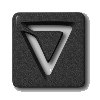 |
Head Directed Navigation in Virtual Environments
Strolling Through Cyberspace With Your Hands In Your Pockets:
Project duration:
1997
Contact:
Anton Fuhrmann
|
Description
|
Head-Directed Navigation is a new and simple, yet efficient paradigm for
navigating in large virtual spaces.
|
Application
|
Virtual Environments that require a user to cover simulated distances.
|
Problems
|
Unexperienced users often have a hard time learning complicated navigation
patters with 3-D mice or similar input devices. In large virtual worlds,
this frequently leads to disorientation.
|
Approach
|
The user navigates the virtual environment only by orienting his or her head.
An orientation tracker mounted on the head-mounted display worn by the user
is used to derive the navigation commands. The user's hands are left free
for other tasks.
|
Publications
|
 A. Fuhrmann, D. Schmalstieg, M. Gervautz:
A. Fuhrmann, D. Schmalstieg, M. Gervautz:
Strolling through Cyberspace with Your Hands in Your Pockets:
Head Directed Navigation in Virtual Environments
Virtual Environments '98
(Proceedings of the 4th EUROGRAPHICS Workshop on
Virtual Environments), pp. 216-227, Stuttgart, Germany, June 16-18,
Springer-Verlag, 1998.
|
Navigating through virtual environments -
popularly known as "Virtual Reality" - can no longer be considered a task
reserved for the expert. 3D-worlds and architectural walkthrough applications
for the common user require new, intuitive interface techniques. We present
a simple navigational metaphor for walkthrough applications called
head-directed navigation.
This method is extremely easy to learn and doesn't require additional input devices, thereby leaving the users hands free for other tasks. In the following we discuss the properties of established navigation methods and give an overview of our approach.
Imagine a little kid playing "airplane": It holds out its arms and tilts its whole upper body according to the direction in which the "plane" should move. It behaves like an airplane, rolling and yawing according to the laws of aerodynamics even without any knowledge of these laws.

This observation inspired our approach of head directed navigation.
The complexity of controlling an object like an airplane capable of moving in all directions can be drastically reduced
since we are only considering movement on the floor. Therefore we can use the up- and downward sweeping motion of the head to control our speed.
|
The user moves forward by simply inclining her head while gazing at the target, stopping is done by leveling out the direction of view and moving backwards by leaning back.
|
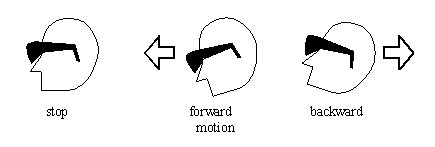
|
|
Steering is done by turning the head in the desired direction. |
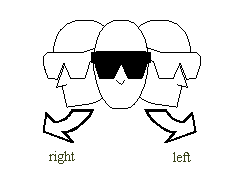
|
Scrutinizing a nearby object from top to bottom also cannot be accomplished without moving back- and forward. This is solved by defining a view mode with a stationary viewpoint and a walk mode where head-directed navigation is active. View mode in combination with a 6DOF tracker which also tracks head position enables the user to use her feet to walk around small distances when examining a room or walking around an object.
|
Switching between walk and view mode and vice versa is done by tilting your head to one side (figure 3). This allows the user to switch modes while still keeping her hands free and utilizes a seldom used head position. |
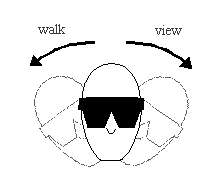
|
This navigation method covers the above mentioned requirements: It is easy to understand, uses no additional input devices and allows unlimited movement on the ground plane. Since the orientation of the user in reality and virtuality is the same, disorientation due to lack of bearing almost never occurs.
Implementation and Evaluation
We first implemented head-directed navigation as motion metaphor in a PC-based walkthrough system which represented a virtual gallery. HMD and tracking devices were virtual-io i-glasses, an inexpensive solution capable of displaying stereoscopic graphics. The integrated tracker uses gravity and a compass to track three rotational degrees of freedom and is orders of magnitude cheaper than professional 6DOF magnetic tracker systems. The implementation was a straightforward application of the above principles.
The system was demonstrated at a local computer fair, where it was tested on about 50 more or less inexperienced and unbiased users. In most cases the users adapted quickly to the navigation method and where able to concentrate on viewing the contents of the gallery instead on moving around.
Let us give some examples of navigational tasks which can easily be accomplished with our method:
- Walking around a corner: The user inclines her head while looking parallel to the wall until reaching the corner, then turns around the same way one naturally uses when looking around a corner.
|
HMD view (screenshot) |
users position in VE
(top view) |
head direction in reality
(top view) |
|
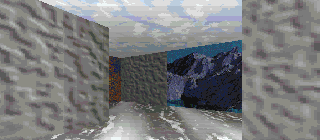
|
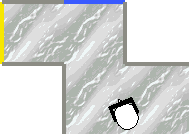
|

|
|
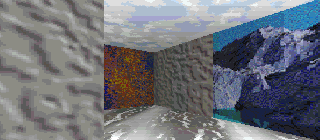
|
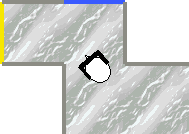
|

|
|
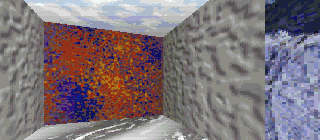
|
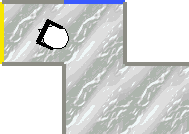
|

|
- Moving away from an object to gain an overview: The user leans her head back, like one does when looking at the top of a tower, until a sufficient distance has been reached.
|
HMD view (screenshot) |
users position in VE
(top view) |
head direction in reality
(side view) |
|
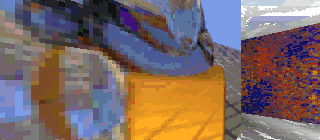
|
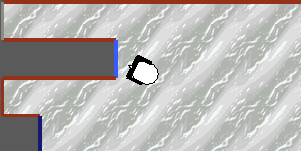
|

|
|
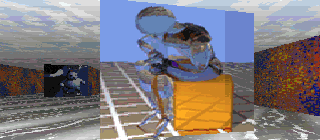
|
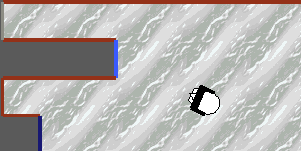
|

|
|
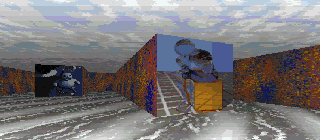
|
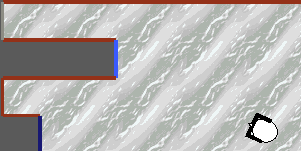
|

|
Acknowledgments
This work has been supported by the Austrian Science Foundation (FWF) under project no. P-12074-MAT.
This page is maintained by Anton Fuhrmann. It was last updated on June 4th, 1997.
If you have any comments, please send a message to
mailto:fuhrmann@cg.tuwien.ac.at

 A. Fuhrmann, D. Schmalstieg, M. Gervautz:
A. Fuhrmann, D. Schmalstieg, M. Gervautz:















